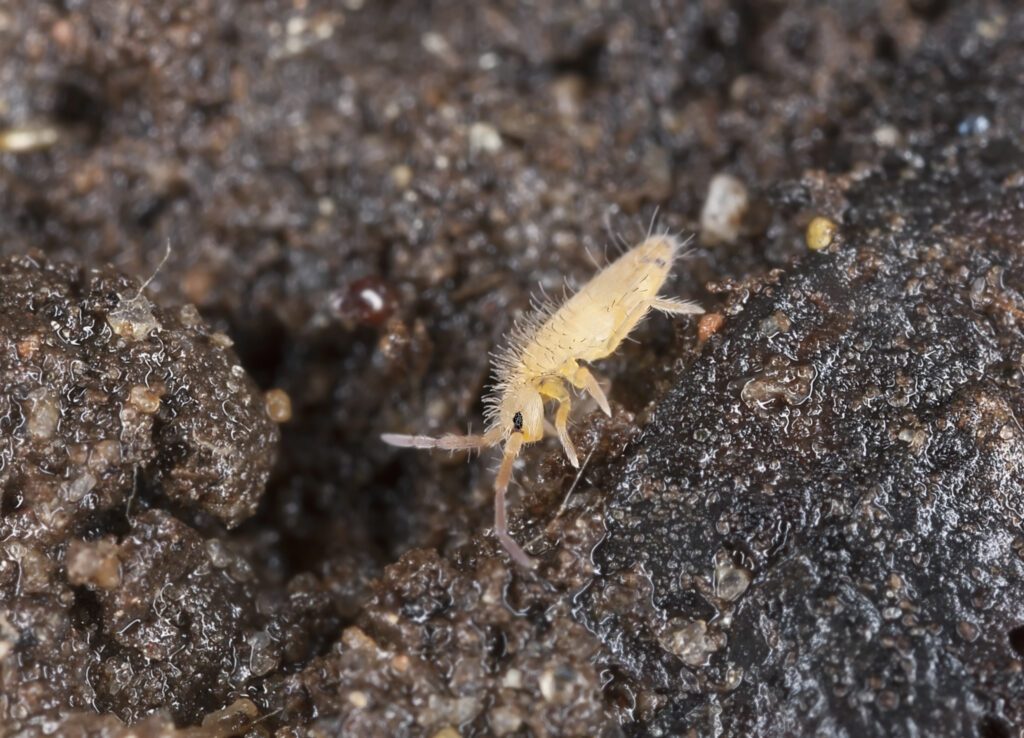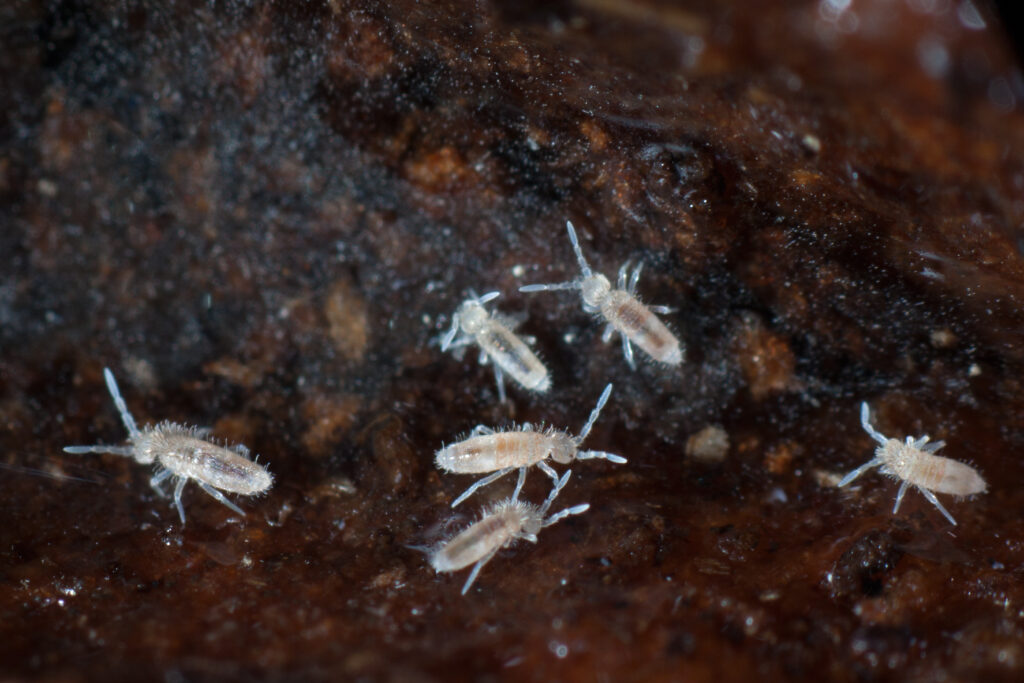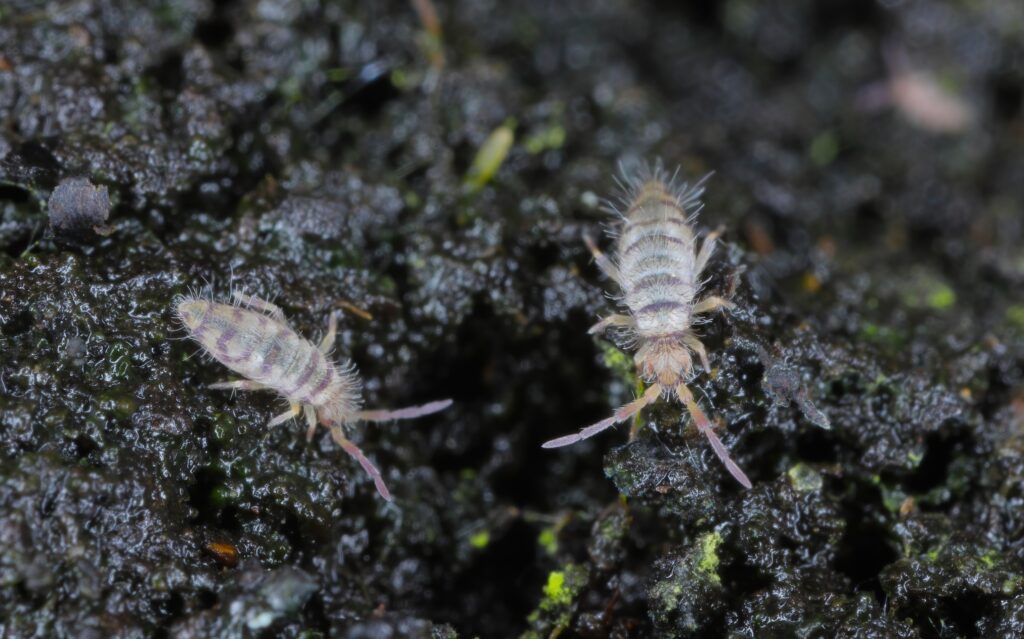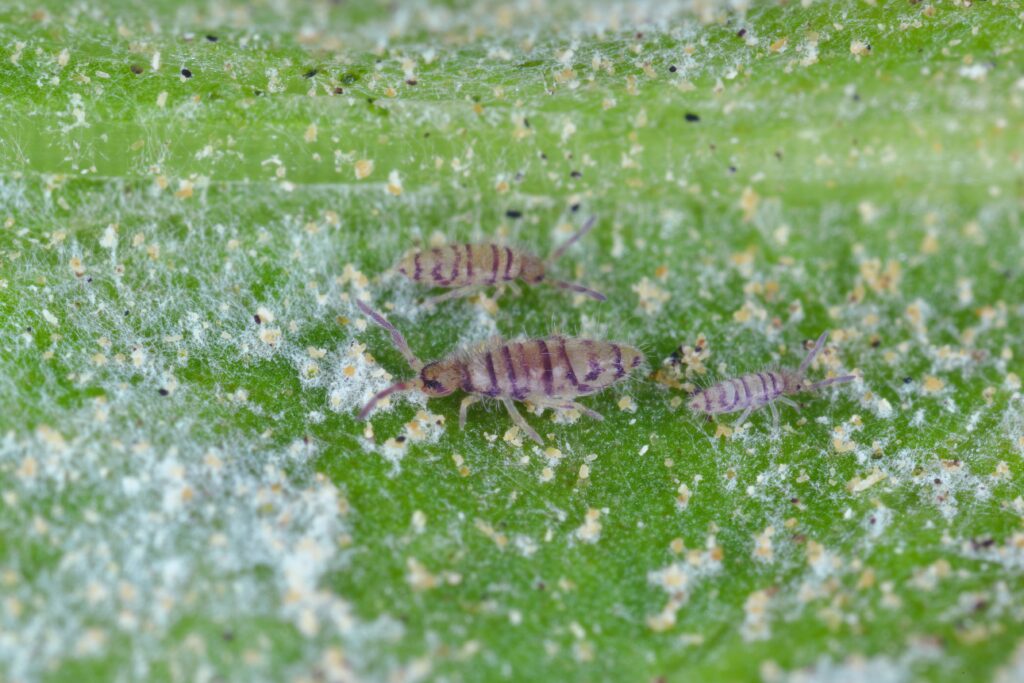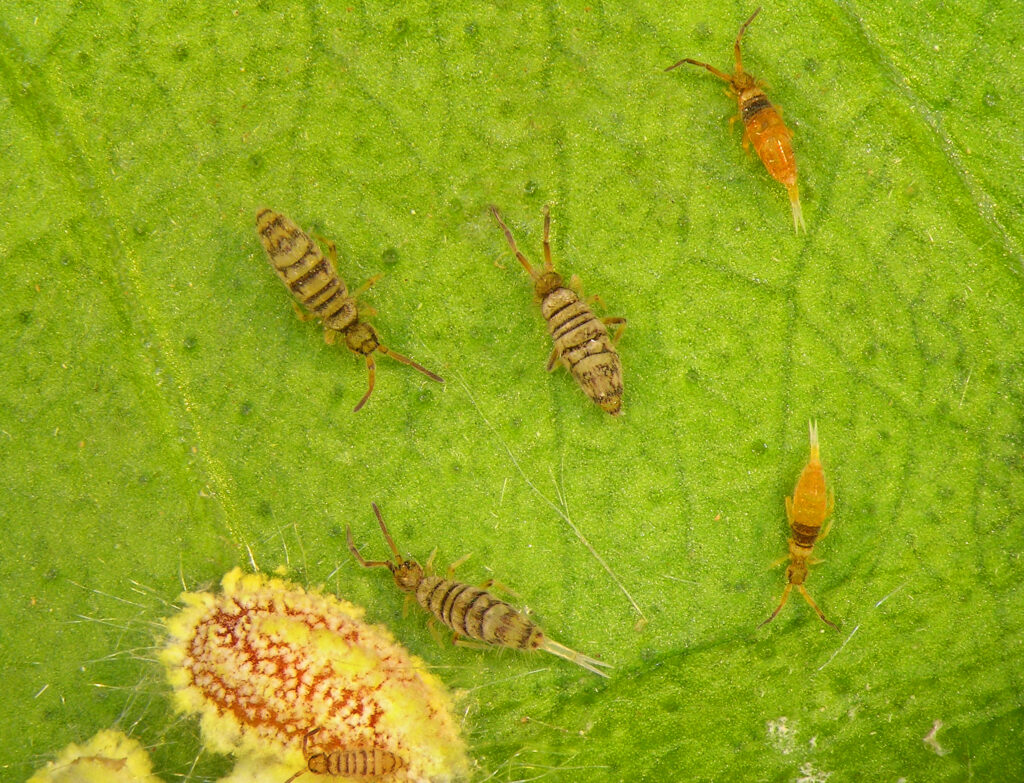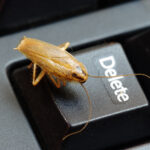Although pests are sneaky, they’re not the best at staying hidden forever. After all, a family of rats can only hide within the walls for so long. A tiny pest has a much easier time staying out of sight while they reproduce and find a steady food source. Take the springtail, for example. This insect is so small that it looks like ground pepper when it’s on a white surface! Leap Year has us thinking about the hoppy habits of these pests, so let’s dive into the unique world of springtails and the best ways to prevent an infestation.
The Basics
If you’ve never heard of springtails, you are not alone. Many people don’t know the official name of the tiny dark bugs they find hopping around the backyard. Springtails are also called “snow fleas” because they look extremely similar to fleas when they rest on the snow. Thankfully, springtails don’t bring the same dangers that fleas do, but more on that later.
Springtails are relatively standard insects based on their features:
- About 1/16 of an inch long
- Neutral coloring; usually black, brown, gray, or white
- 6 legs
- 2 antennae
- Long bodies
- No wings
- Active across the U.S.
Despite their wintry nickname, springtails aren’t always active in the winter. They can’t survive the freezing temperatures unless they are prepared. Whether they are outside or inside, springtails get around by hopping. They have a forked appendage under their abdomen that snaps to propel the insect forward. This appendage — the furcular — is strong enough to launch the springtail up to 6 inches away!
The Life Cycle
The specifics of a springtail’s life cycle depend on the species. But the basics of their lives are (mostly) the same across the board, making it easier to control them when they invade. When they lay their eggs, springtails can either produce them in one mass or one at a time. A female springtail can lay up to 400 eggs in her lifetime if she is healthy and has a safe shelter.
Once the eggs hatch, the offspring goes through a series of molts. Some springtails only shed their exoskeleton 4 times, while others have 50 molts that continue through their adult lives. They do not go through metamorphosis because springtails hatch as even smaller versions of their adult selves and then grow with each molt. These bugs live for anywhere from 1 week to 3 years, depending on the availability of their food and safety of their habitat.
The Diet
Speaking of their food, springtails are generally detritivores. This means they feed on dead and decaying organic matter, particularly from plants. Some species are carnivores (meat-eaters) or herbivores (plant-eaters), but you’re more likely to see springtails eating rotten plants. Their favorites include decaying roots, fungi, leaves, pollen, and algae. It’s not easy to see springtails while they’re feeding since they just look like dark spots on already-rotting plants!
Springtails decide what to eat by feeling everything with their antennae. These are equipped with taste and smell receptors, so springtails get the full experience just by touching plant matter with their antennae. Since they mainly eat decaying matter, springtails are technically beneficial to the ecosystem by speeding up the decomposition process of old plants and fungi. But these pests aren’t always happy helpers, as springtails create holes in healthy leaves when they set their sights on living plants.
The Habitat
Like any insects, springtails prefer to live near a reliable source of food so they don’t have to travel far. The close proximity serves to both protect their numbers and provide their young with nutrients immediately. Springtails need excessive moisture to survive, similar to cockroaches and silverfish. Luckily for them, decaying plant matter is usually damp and causes the soil around them to be moist as well.
Springtails are usually found:
- In damp soil
- Near leaking pipes
- In decaying wood
- Near a dripping A/C unit
- In puddles
- Near swimming pools
- In melting snow
- Near fungi
- On mold
These pests adapt to cold temperatures, so they are still able to hide in damp, cooler areas. Springtails naturally produce a protein that helps their tiny bodies withstand the cold. This is how they are able to hop around on watery snow with ease. Speaking of which, any condensation or moisture around the home is immediately appealing to springtails. This includes leaks, overwatered plants, and puddles. In fact, these attractions are exactly what makes springtails a household pest across the country.
The (Missing) Risks
If you see some random black specks on the ground, it’s probably not black pepper (unless someone had a little spill). Springtails constantly seek out damp areas, so they actually serve as an alert that there is a plumbing issue in the home. It is worth inspecting the household features near a springtail invasion, especially if they’re in the bathroom, kitchen, or basement. These areas tend to collect humidity and develop leaks the most, so keep an eye out for any excessive moisture that’s attracting these tiny pests.
Other than their slightly-helpful habit of alerting us to leaks, springtails don’t make a major impact on the homes they invade. No one wants a bunch of bugs in the house, no matter how minuscule they are. But compared to the more infamous pests, springtails do not have a “danger” factor to their existence. They don’t spread disease, bite us, eat fabric, cause structural damage, or kill plants. Basically, you don’t have to panic if you stumble upon a springtail party in your bathroom, especially since every pest is preventable.
The Prevention
Springtails don’t have the typical risks of pests, but that doesn’t mean we want them in our homes! These insects are still a nuisance to have around, especially once they start hopping. It’s easy to prevent springtails from invading your home and multiplying. All you have to do is eliminate the extra moisture that would otherwise invite springtails to the party.
The most effective ways to prevent a springtail infestation are to:
- Fix leaks ASAP, such as in the bathrooms, laundry room, kitchen, and garage.
- Make sure all drains are working properly, such as in the sinks and showers.
- Keep all doors and windows closed when not in use, especially in the winter.
- Water plants and lawns the proper amount, being careful not to overwater anything.
- Use a dehumidifier in rooms that easily collect moisture, like the basement and bathrooms.
- Make sure any stored firewood is completely dry, as springtails (and termites!) love moist wood.
- Limit the amount of mulch in the yard, since it’s an ideal hiding spot for springtails.
- Inspect the cabinets under each sink to make sure they are completely dry, and fix any leaks or drips that you find.
These tasks should do the trick in keeping springtails out of your space. But there is one more way to keep a pest-free home: targeted treatments from knowledgable professionals.
Pointe Solves All Pest Problems Big And Small!
Pest infestations aren’t always a catastrophic event. Sometimes, it’s a few insects that sneak into a home in search of food and shelter. Whether you’re fighting an army of ants or wanting to prevent wood-boring pests, Pointe Pest Control is here to help! Our technicians solve each issue with a combination of strategy, dedication, and efficiency. We do not waste time in getting you the long-term solutions you deserve. Plus, all of our treatments are safe for people and pets, so you never have to worry about toxic pesticides. Contact us today to learn more about the most reliable pest control services in the Pacific Northwest!
Citations
El Damir, M. (Dr.). (2010, May). [Occational Invaders] Spotlight on springtails. Pest Control Technology. Available at https://www.pctonline.com/article/pct1005_occationalinvaders/ (Accessed on February 22, 2024).
Schuh, M., Hutchinson, B., Koch, B, Kells, S., Hahn, J., & Corillo, M. (2024). Springtails. University of Minnesota Extension. Available at https://extension.umn.edu/nuisance-insects/springtails (Accessed on February 22, 2024).
Springtails. (n.d.). Missouri Department of Conservation. Retrieved February 22, 2024, from https://mdc.mo.gov/discover-nature/field-guide/springtails
Springtails. (n.d.). Pest World. Retrieved February 22, 2024, from https://www.pestworld.org/pest-guide/occasional-invaders/springtails/

